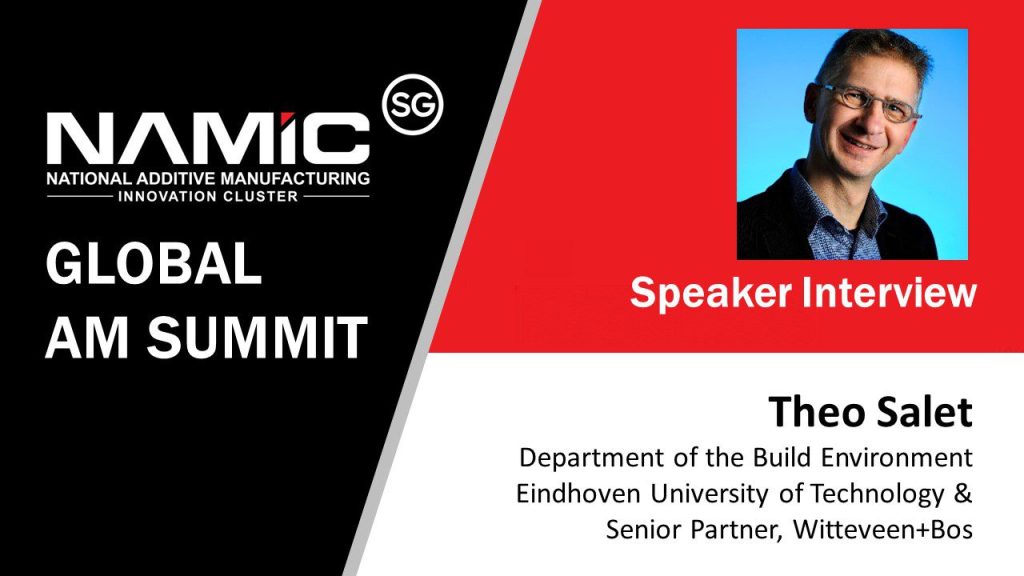1. Please share your story on the journey towards Technology Adoption.
The Architecture Engineering and Construction industry is one of the largest industries world-wide. However, the industry is highly fragmented. The design phase is almost fully separated from the construction phase, causing a loss of information and thereby time and money. An integration between design and construction is possible if we store our designs digitally (BIM) and make use of robots for construction. Industry, knowledge institutes like universities and the government must work together to achieve this goal.
2. How do you think 3D printing has improved and impacted the quality of people’s life?
In general and holistically speaking 3D printing allows to make object at the location of need. This safes on shipping and avoids a need to have many spare parts on stock, yet easily available. Products are optimized since material is added only at those positions needed for, saving on our resources. Besides, consumers no longer need to buy goods that are mass produced but customized to their personal needs. Apart from all of this, special 3D print technologies have a direct impact on our daily lives, like printing of electronic systems and prosthesis, skin and even organs (in the future) in the medical world.

3. What do you think the future of 3D printing holds? What new developments can we expect in the next 5 years?
Generally speaking, the print process will be upscaled to higher TRL levels. The focus will no longer be to showcase that it is possible to print, but to make the technology available on a commercial level. A transition from prototyping, towards serious business development by scaling up and work on deep learning for the printers for reasons of quality control. I expect this will come along with the development of new and sustainable materials. From my perspective, the AEC industry will have a change to adopt 3D printing.
4. What does 3D Printing mean to you and to your business success?
Working at a university, this question is hard to answer since it is not business being generated but knowledge. However, it is thrilling to experience that the knowledge is adopted by the industry that already realized the first bridge printed in concrete and are currently working with us together on real houses.
5. What new business opportunities, can we look forward to in Industry 4.0, especially in your industry?
A series of 3D printed bridges and houses are expected to be printed in concrete (and steel0 in the near future world-wide. The next step that already started is to commercialize the technology. This needs the development of parametric models to design and print series of similar objects and cut down on the initial costs. At the same time there is a need for regulation and new standards to ensure the safety of our built environment. Materials will improve, as will the technology in a transition from prototyping towards robust and controlled processes, using open loop.

6. From your experience, what are the limitations/roadblocks for companies using Additive Manufacturing and what advise will you give to startups wanting jump on the bandwagon?
Thinking of printing concrete, simple and cheap printable materials are needed for to avoid high initial materials costs, despite all kinds of optimizations that come along with additive manufacturing. Besides, limit yourself in the application and never pass the border and realize unsafe structures. The absence of standards on printed concrete might become an issue and the topic therefore need serious attention.

7. Is 3D Printing the game changer for the Industrial revolution 4.0 and is it here to stay for the long haul?
The true game changer is the Industry 4.0. 3D printing is a technology that fits well in the development since it adds sustainability, mass customization and a large degree of design freedom. Like with all new technologies, it is now about managing the expectations. The technology is very promising, without any doubt. However, modern society expects more and faster developments then those that can be made possible. If the time needed to develop the new technology is not available, disappointments will overshadow the potential.

